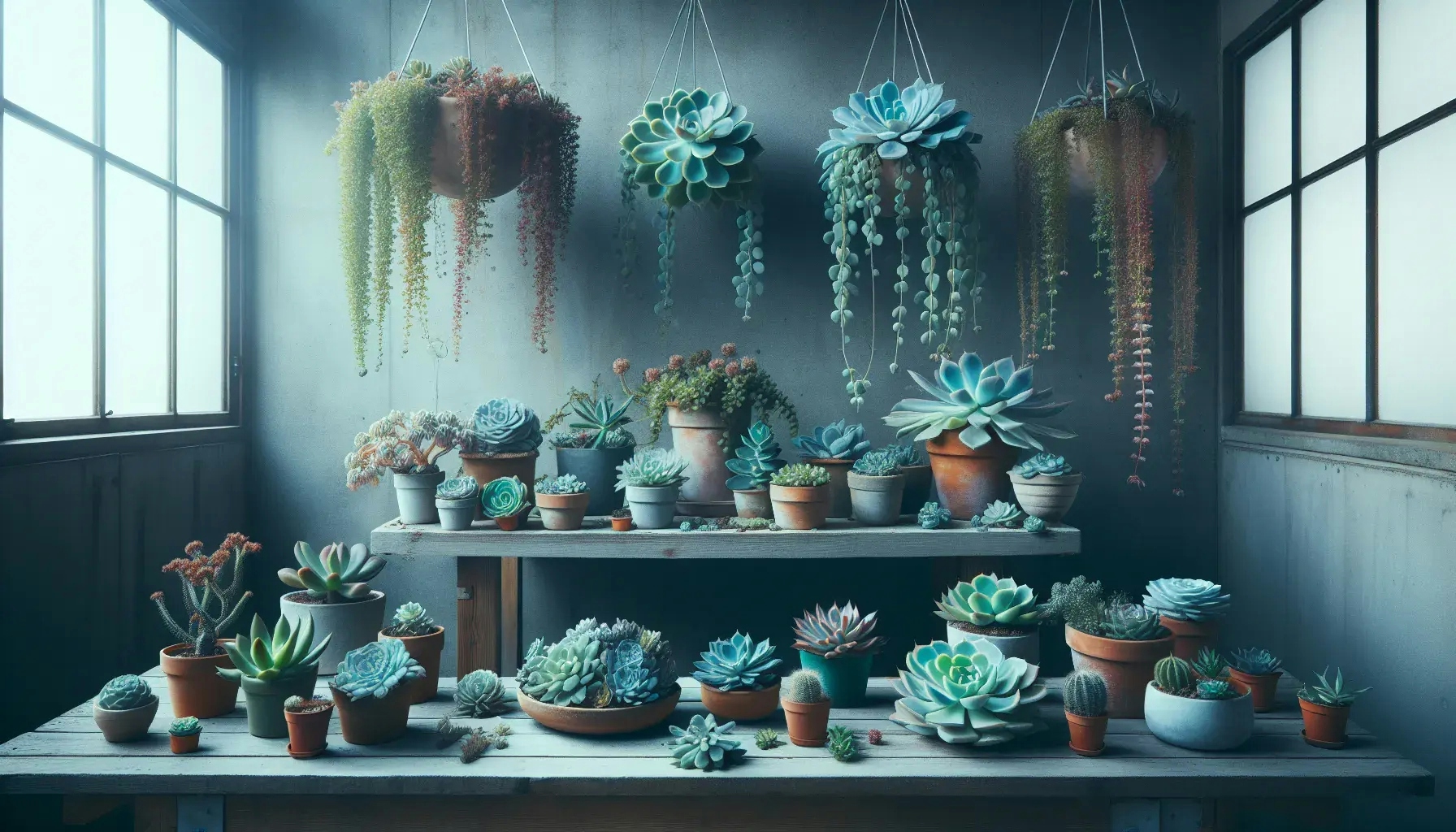Welcome to our comprehensive guide on cultivating and nurturing succulents. Succulents, with their unique shapes and vibrant colors, have become a favorite among plant enthusiasts. They are not only aesthetically pleasing but also require minimal care, making them perfect for both novice and experienced gardeners. In this guide, we will delve into the world of succulents, providing you with all the necessary knowledge to grow and care for these beautiful plants.
Understanding Succulents: An Overview
Succulents are plants that store water in their leaves, stems, or roots, enabling them to survive in arid conditions. This unique feature gives them their thick, fleshy appearance, which is a key characteristic of succulents. They come in a variety of shapes, sizes, and colors, making them a popular choice for indoor and outdoor gardening.
Succulents are native to many parts of the world, with the majority originating from the deserts of Central America, South Africa, and the mountainous regions of Brazil. Despite their origins in harsh climates, succulents have adapted to grow in a variety of environments, making them a versatile addition to any garden.
When it comes to growing succulents, understanding their natural habitat and growth patterns is crucial. In their native environments, succulents have adapted to long periods of drought followed by short periods of intense rain. Mimicking these conditions in your home or garden will help your succulents thrive.
Choosing the Right Succulents
With thousands of succulent species available, choosing the right one can be a daunting task. Factors to consider include the plant's size, color, and growth habits, as well as your climate and the amount of sunlight your garden receives.
Some popular succulent choices include the Jade Plant, known for its thick, shiny leaves, and the Aloe Vera, famous for its medicinal properties. The Echeveria, with its rosette shape and wide range of colors, is another favorite among succulent enthusiasts.
When choosing succulents, it's also important to consider their growth habits. Some succulents, like the Sempervivum, grow in tight clusters and spread quickly, making them ideal for ground cover. Others, like the Aeonium, grow tall and are perfect for adding height to your garden.
Planting Your Succulents
Once you've chosen your succulents, the next step is planting. Succulents prefer a well-draining soil mix to prevent water from sitting at their roots, which can lead to root rot. You can purchase a pre-made succulent soil mix or make your own by combining regular potting soil with coarse sand or perlite.
When planting your succulents, make sure to leave enough space between each plant to allow for growth. Overcrowding can lead to competition for resources and increase the risk of disease.
After planting, water your succulents thoroughly and then let the soil dry out completely before watering again. Remember, succulents are adapted to survive in dry conditions, so overwatering can be more harmful than underwatering.
Caring for Your Succulents
Succulents require minimal care compared to other plants, but there are still some key things to keep in mind. First, succulents need plenty of sunlight. Most succulents prefer at least six hours of sunlight a day, so place them in a sunny spot in your home or garden.
Watering is another crucial aspect of succulent care. As mentioned earlier, succulents prefer a thorough watering followed by a period of dryness. A good rule of thumb is to water your succulents once the soil has completely dried out. Overwatering can lead to root rot, a common problem in succulents.
Lastly, succulents need to be fertilized regularly to ensure they get all the nutrients they need. Use a balanced, water-soluble fertilizer and follow the package instructions for application rates.
Troubleshooting Common Succulent Problems
Despite their hardy nature, succulents can still encounter problems. One common issue is etiolation, or stretching, which occurs when a succulent isn't getting enough light. If your succulent starts to look tall and thin, move it to a sunnier location.
Overwatering is another common problem. If your succulent's leaves start to look yellow and mushy, you may be watering too much. Cut back on watering and make sure your succulent is in a well-draining soil.
Pests can also be a problem for succulents. Common pests include mealybugs, aphids, and spider mites. If you notice small, cotton-like clusters on your succulent, you may have a mealybug infestation. Aphids are small, green insects that can be found on the undersides of leaves. Spider mites, which are tiny and difficult to see, can cause yellowing and speckling on leaves.
Propagating Your Succulents
One of the joys of growing succulents is propagating them. Propagation is the process of creating new plants from existing ones. For succulents, this can be done through leaf cuttings, stem cuttings, or offsets.
To propagate from a leaf, simply twist off a healthy leaf, let it dry for a few days to form a callus, then place it on top of a pot with succulent soil. In a few weeks, you should see roots and a new baby succulent forming.
Stem cuttings work in a similar way. Cut a piece of the stem, let it dry to form a callus, then plant it in succulent soil. In a few weeks, you should see new roots forming.
Offsets, or "pups", are small succulents that grow at the base of a parent plant. To propagate from an offset, simply remove it from the parent plant, let it dry, then plant it in succulent soil.
Embracing the Succulent Journey
Growing and caring for succulents is a rewarding journey. These resilient plants not only add beauty to your home or garden but also offer a relaxing hobby. By understanding their needs and providing the right care, you can cultivate a thriving succulent garden. Remember, every succulent is unique, and part of the fun is learning about their individual needs and watching them grow. Happy gardening!

